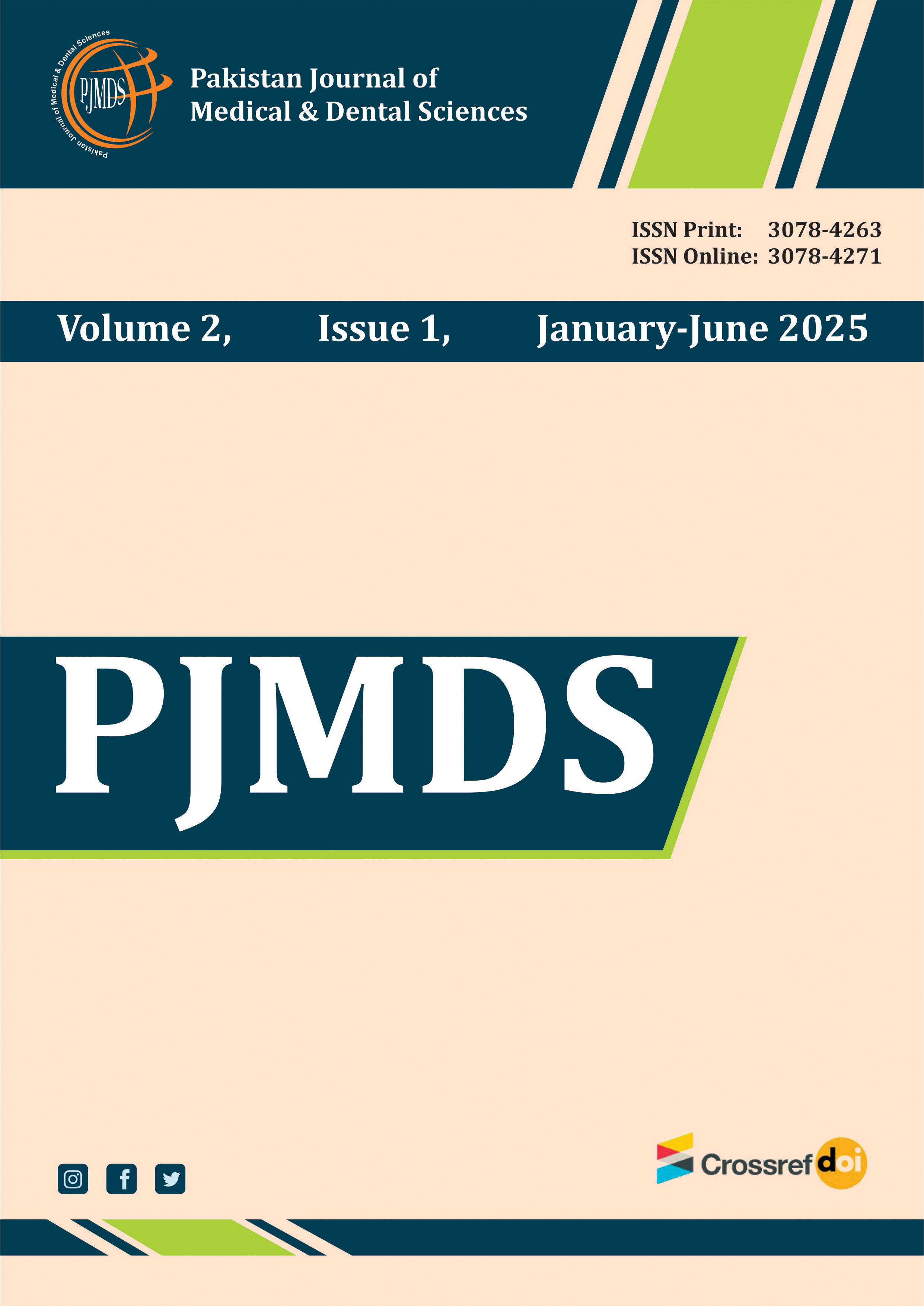MANAGEMENT OF SEGMENTAL TIBIAL DEFECT WITH INTERCALARY BONE TRANSPORT BY ILIZAROV METHOD
Abstract
Objective:
To determine the outcomes of intercalary bone transport using the Ilizarov technique in patients with segmental tibial defects.
Methodology:
This empirical investigation was conducted at Shaheed Mohtarma Benazir Bhutto Medical University (SMBBMU), Larkana, during January 2023 to December 2024 to evaluate the consequences of intercalary bone transport in individuals aged between 18 and 65 years across both genders, ASA class I to III. The results were appraised utilizing the ASAMI criteria at intervals of 1, 3, and 6 months postoperatively. Data was analyzed by employing SPSS version 26, with outcomes categorized as excellent, good, fair, or poor.
Results:
A total of fifty patients (mean age 33.7 ± 12.5 years; 80% male) underwent treatment utilizing intercalary bone transport. The incidence of pin tract infections was recorded at 74%, nonunion 32%, limb length discrepancies 42%, and infections 38%. Radiological results were categorized as excellent in 56% of cases, good 36%, and poor 8%. The functional outcomes were markedly influenced by the occurrence of complications, with bone grafting required in 32% of instances and refracture manifesting in 12% of cases.
Conclusion:
The Ilizarov intercalary bone transport technique is a dependable and efficacious intervention for addressing segmental tibial defects, resulting in favorable radiological and functional outcomes. The occurrence of pin tract infections, discrepancies in limb length, and nonunion was prevalent; however, these complications did not markedly hinder the success of the treatment. Precision in surgery, patient compliance, and thorough postoperative care reduce complications and improve outcomes.
Keywords:
Bone regeneration, Ilizarov technique, Intercalary bone transport, Orthopaedic outcomes, Segmental tibial defects
Published
How to Cite
Issue
Section
License
Copyright (c) 2025 Pakistan Journal of Medical & Dental Sciences

This work is licensed under a Creative Commons Attribution 4.0 International License.






